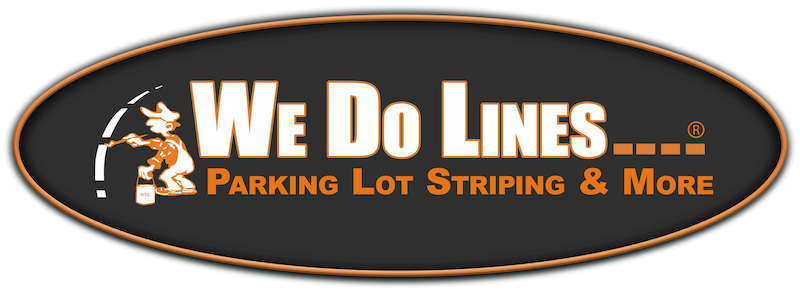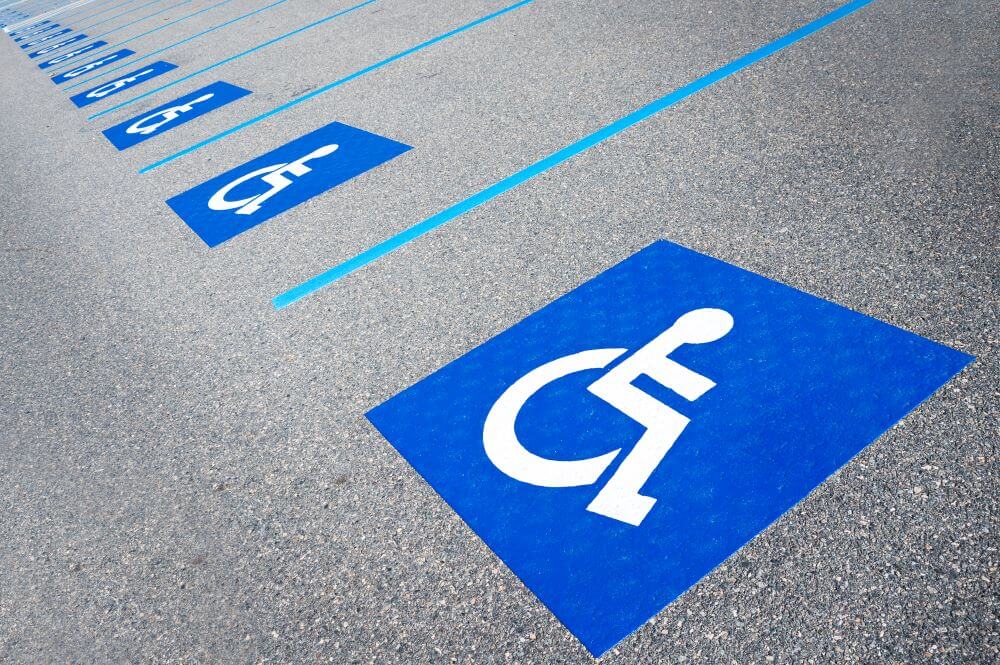Parking lot striping might seem like a trivial aspect of infrastructure management, but its importance cannot be overstated. Beyond merely delineating parking spaces, effective striping is crucial for ensuring optimal visibility and safety within parking facilities. In this comprehensive guide, we’ll explore the significance of parking lot striping, its objectives, and best practices for planning and preparation.
Importance of Parking Lot Striping
Parking lot striping serves as a fundamental element of organization and safety in parking facilities. It provides clear guidance to drivers, pedestrians, and other users, facilitating smooth traffic flow and reducing the risk of accidents. Without proper striping, parking lots can quickly descend into chaos, leading to confusion, congestion, and potential hazards. Therefore, investing in high-quality striping is essential for maintaining order and safety in parking environments.
Objectives of Effective Striping
The primary objectives of parking lot striping encompass three key areas:
- Visibility: Clear and visible striping ensures that parking spaces, traffic lanes, and pedestrian pathways are easily discernible, even under various lighting conditions.
- Safety: Well-marked parking lots contribute to safer navigation for both drivers and pedestrians, minimizing the risk of collisions and accidents.
- Compliance: Adherence to regulatory standards, such as those outlined by the Americans with Disabilities Act (ADA), is essential to ensure accessibility and avoid legal liabilities.
Planning and Preparation

Before embarking on a parking lot striping project, thorough planning and preparation are crucial to ensure its effectiveness and longevity. This phase involves several key steps, including site assessment, material selection, and design considerations.
Site Assessment
A comprehensive site assessment is the foundation of any successful striping project. It involves evaluating various factors to determine the optimal layout and design for the parking lot. Key considerations include:
- Traffic Flow Analysis: Assess the flow of vehicles within the parking lot to identify high-traffic areas, entry/exit points, and potential congestion points. Understanding traffic patterns is essential for designing efficient traffic flow routes and minimizing bottlenecks.
- ADA Requirements Evaluation: Ensure compliance with ADA regulations by identifying and marking accessible parking spaces, as well as providing appropriate signage and pathways for individuals with disabilities. Failure to meet ADA requirements can result in legal penalties and pose significant barriers to accessibility.
Material Selection
Choosing the right materials is critical for the durability and effectiveness of parking lot striping. Key factors to consider include:
- Paint Types: Selecting high-quality paint is essential for ensuring long-lasting striping that withstands heavy traffic and environmental factors. Common types of paint used for striping include latex, epoxy, and thermoplastic paints, each offering distinct advantages in terms of durability and visibility.
- Reflective Coatings: Incorporating reflective coatings enhances visibility, particularly during low-light conditions or inclement weather. Reflective paints contain tiny glass beads or reflective pigments that reflect light, making striping more visible to drivers and pedestrians.
Design Considerations
Designing the layout of parking spaces requires careful consideration of various factors to optimize space utilization and traffic flow. Key design considerations include:
- Space Dimensions: Ensure that parking spaces are adequately sized to accommodate different types of vehicles while complying with regulatory requirements. Standard dimensions for parking spaces typically range from 8 to 9 feet in width and 18 to 20 feet in length, with variations for compact and accessible spaces.
- Layout Options (Angle vs. Perpendicular): Evaluate different layout options, such as angle parking and perpendicular parking, to determine the most suitable configuration based on the available space and traffic flow patterns. Angle parking allows for easier maneuverability but requires more space, while perpendicular parking maximizes space efficiency but may be less convenient for drivers.
Visibility Enhancements
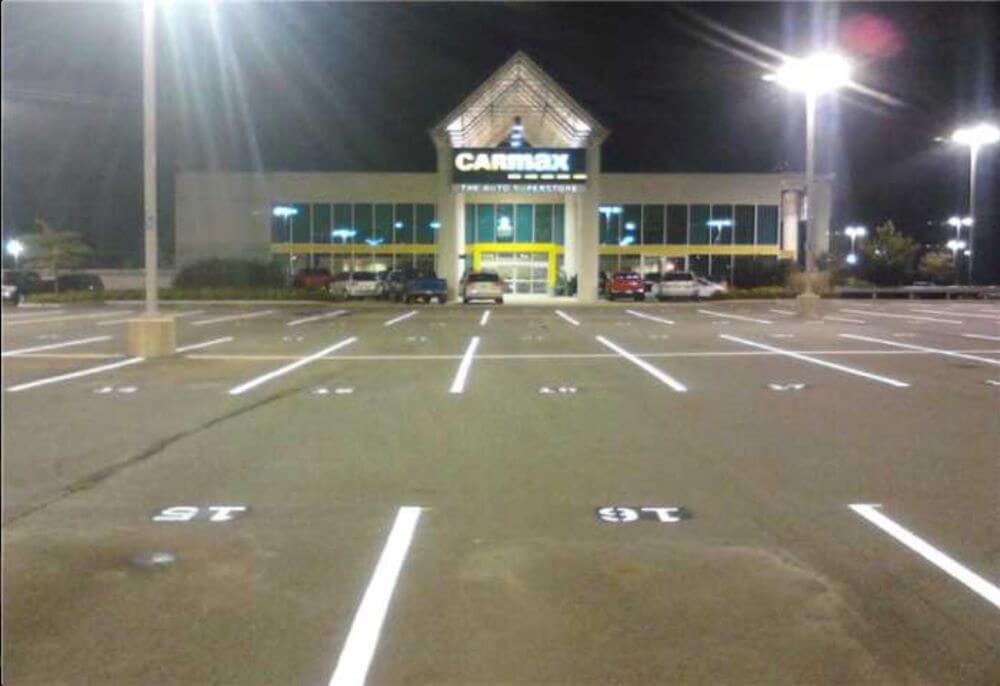
Enhancing visibility is a key aspect of effective parking lot striping. By employing various techniques and materials, parking lot owners and managers can ensure that striping remains clear and visible under all conditions.
Color Contrast and Choices
The choice of colors for striping plays a significant role in visibility. High-contrast colors, such as white and yellow, are commonly used for striping due to their ability to stand out against asphalt or concrete surfaces. These colors provide clear delineation of parking spaces, traffic lanes, and pedestrian pathways, even from a distance.
Use of Reflective Paints
Incorporating reflective paints is another effective way to enhance visibility, particularly during low-light conditions or inclement weather. Reflective paints contain tiny glass beads or reflective pigments that reflect light, making striping more visible to drivers and pedestrians. By increasing the visibility of striping, reflective paints improve safety and reduce the risk of accidents in parking facilities.
Additional Markers
In addition to striping, the use of additional markers can further enhance visibility within parking lots:
- Reflectors: Installing reflectors along curbs and boundaries helps delineate parking spaces and traffic lanes, especially at night or in poorly lit areas. Reflectors provide an additional visual cue to drivers, improving overall visibility and safety.
- Curb Paints: Using contrasting colors or reflective paints on curbs helps highlight pedestrian walkways, loading zones, and other designated areas within the parking lot. By clearly defining these areas, curb paints improve navigation and reduce the risk of accidents.
By incorporating color contrast, reflective paints, and additional markers, parking lot owners and managers can significantly enhance the visibility of striping, thereby improving safety and functionality within parking facilities.
Safety Considerations
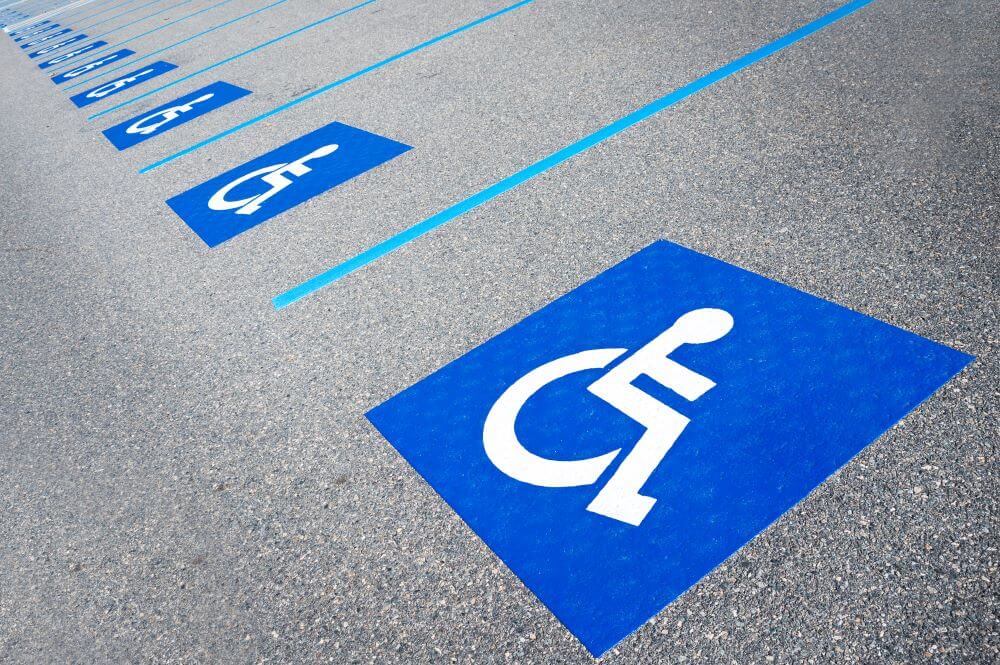
Safety is paramount in parking lot design and striping. By adhering to safety guidelines and regulations, parking lot owners and managers can create a safer environment for both drivers and pedestrians.
ADA Compliance
Ensuring compliance with ADA regulations is essential to provide equal access to parking facilities for individuals with disabilities. Key ADA requirements include:
- Accessible Parking Spaces: Designating and marking accessible parking spaces with appropriate signage and pavement markings.
- Accessible Pathways: Providing clear and unobstructed pathways for individuals with disabilities, including ramps, crosswalks, and tactile paving.
By adhering to ADA regulations, parking lot owners and managers can ensure that their facilities are accessible to all users, promoting inclusivity and safety.
Pedestrian Safety Measures
Implementing measures to enhance pedestrian safety is essential to reduce the risk of accidents within parking facilities. Key pedestrian safety measures include:
- Crosswalks: Clearly marking crosswalks with high-visibility striping and signage to facilitate safe pedestrian crossings.
- Walkways: Providing designated pedestrian walkways with clear markings and signage to separate pedestrian traffic from vehicular traffic.
By prioritizing pedestrian safety, parking lot owners and managers can create a safer environment for pedestrians and reduce the risk of accidents within parking facilities.
Emergency Vehicle Accessibility
Ensuring emergency vehicle accessibility is critical to facilitate timely responses to emergencies within parking facilities. Key considerations include:
- Emergency Access Routes: Designating and marking emergency access routes to ensure unobstructed access for emergency vehicles.
- Fire Hydrant Accessibility: Ensuring clear access to fire hydrants by marking no-parking zones and providing adequate clearance around hydrants.
By ensuring emergency vehicle accessibility, parking lot owners and managers can help facilitate rapid responses to emergencies and ensure the safety of all users within the parking facility.
Maintenance Best Practices
Maintaining the visibility and effectiveness of parking lot striping is essential for ensuring optimal safety and functionality. In this section, we’ll explore best practices for parking lot striping maintenance, including inspection schedules, cleaning routines, and re-striping frequency.
Inspection Schedules
Regular inspections are crucial for identifying signs of wear, fading, or damage to parking lot striping. Establishing a routine inspection schedule allows parking lot owners and managers to detect issues early and take proactive measures to address them. Key elements of an effective inspection schedule include:
- Frequency: Conduct inspections at regular intervals, taking into account factors such as traffic volume, weather conditions, and the age of the striping.
- Checklist: Develop a comprehensive checklist to guide inspections, covering aspects such as line clarity, color vibrancy, reflectivity, and adherence to regulatory standards.
- Documentation: Document inspection findings and any corrective actions taken to maintain a record of striping maintenance activities and ensure accountability.
By implementing a systematic inspection schedule, parking lot owners and managers can identify and address maintenance issues promptly, preserving the visibility and effectiveness of striping over time.
Cleaning Routines
Regular cleaning is essential for preserving the visibility and functionality of parking lot striping. Dirt, debris, and oil stains can accumulate on striping over time, obscuring visibility and diminishing effectiveness. Key elements of an effective cleaning routine include:
- Frequency: Clean striping regularly to remove dirt, debris, and oil stains that may accumulate on the surface. The frequency of cleaning may vary depending on factors such as weather conditions, traffic volume, and proximity to sources of dirt and debris.
- Cleaning Methods: Use appropriate cleaning methods and equipment to avoid damage to striping. For example, pressure washing or scrubbing with mild detergent may be effective for removing stubborn stains without causing damage to the striping.
- Spot Cleaning: Address spills and stains promptly to prevent them from spreading and causing further damage to the striping. Spot cleaning can help maintain the visibility and clarity of striping between regular cleaning intervals.
By incorporating regular cleaning into maintenance routines, parking lot owners and managers can preserve the visibility and effectiveness of striping, enhancing safety and functionality within parking facilities.
Re-striping Frequency
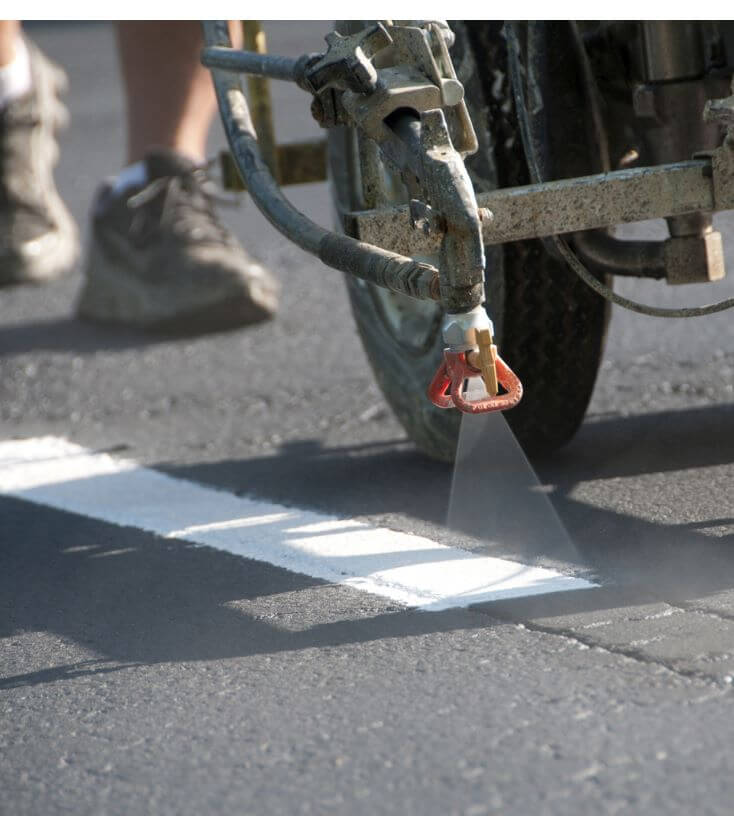
Re-striping is necessary to maintain the visibility and effectiveness of parking lot striping over time. The frequency of re-striping depends on various factors, including traffic volume, weather conditions, and the type of paint or materials used. Key considerations for determining re-striping frequency include:
- Usage Patterns: Assess the usage patterns of the parking lot to determine how quickly striping may deteriorate over time. High-traffic areas may require more frequent re-striping to ensure visibility and safety.
- Paint Durability: Consider the durability of the paint or materials used for striping when determining re-striping frequency. High-quality paints and materials may last longer and require less frequent re-striping compared to lower-quality alternatives.
- Environmental Factors: Take into account environmental factors such as exposure to sunlight, rain, and temperature fluctuations, which can affect the longevity of striping. Parking lots in regions with harsh weather conditions may require more frequent re-striping to maintain visibility.
By assessing usage patterns, paint durability, and environmental factors, parking lot owners and managers can establish a re-striping schedule that ensures the continued visibility and effectiveness of striping, promoting safety and functionality within parking facilities.
Effective parking lot striping is not merely a cosmetic concern but a crucial element of safety, accessibility, and efficiency. By adhering to best practices in planning, design, and maintenance, parking lot owners and managers can create safer and more user-friendly environments for both drivers and pedestrians. Continuous evaluation and adaptation to evolving needs and technologies are essential for ensuring optimal performance and safety in parking lot striping initiatives.
